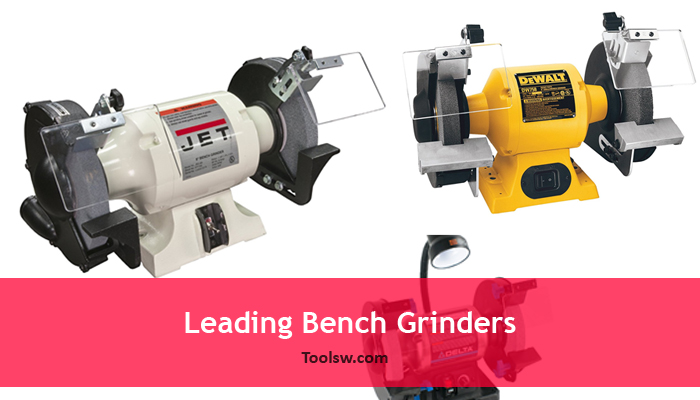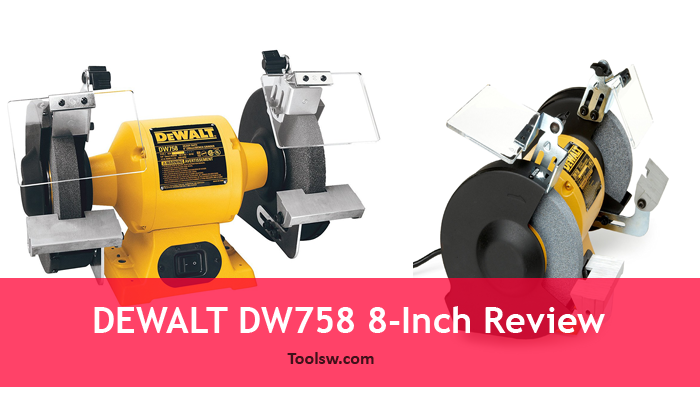Bench Grinder Stand tips for stability, height, safety and efficiency. Learn how to choose, build, or use one effectively.
A bench grinder stand provides a stable, ergonomic, and safe platform for using a bench grinder. It reduces vibration, improves grinding precision, and frees up workbench space. You can buy one ready-made or build your own using steel, wood, or concrete for customized comfort.
Have you ever used your bench grinder on the corner of a cluttered workbench and felt it wobble just a little too much? That’s the moment most DIYers and metalworkers realize the value of a solid bench grinder stand. A reliable stand doesn’t just make grinding easier—it makes it safer, smoother, and way more accurate.
The main purpose of a bench grinder stand is simple: provide a steady, comfortable, vibration-resistant platform so you can sharpen tools, shape materials, or polish edges with confidence. Whether you buy one or build one, the right stand can completely upgrade your workshop experience.
Bench Grinder Stand: The Ultimate Guide To Choosing, Using & Building One 🔧
Why You Need A Bench Grinder Stand 💡
A bench grinder is a powerful tool that spins at high speed. If it shifts or vibrates while you use it, results can become inconsistent. Even worse, it can be unsafe. A dedicated stand prevents movement and keeps everything steady.
A stand also helps position the grinder at the ideal working height. This reduces fatigue, neck strain, and awkward posture. When you’re sharpening chisels or shaping metal, comfort matters.
Finally, a stand frees up space on your workbench, allowing you to move around your workspace more efficiently. It helps create a more organized shop where each tool has its own designated place.
Benefits Of Using A Bench Grinder Stand ⭐
Using a stand provides multiple functional and ergonomic benefits:
- Reduces vibration for cleaner grinding.
- Improves tool sharpening accuracy.
- Enhances safety and stability.
- Optimizes working height for comfort.
- Saves workbench space.
These benefits add up to a smoother workflow and better results on every project.
Key Features To Look For In A Bench Grinder Stand 🔍
When evaluating different stands, keep these features in mind:
- Weight and Stability – Heavier stands shake less.
- Adjustable Height – Allows ergonomic positioning.
- Bolt-down Base or Floor Anchors – Adds security.
- Tool Tray or Storage – Keeps wheels and tools within reach.
Choose based on your shop space and grinder size.
Comparing Bench Grinder Stand Materials 🏗️
Below is a quick comparison of the most common stand materials:
| Material | Stability | Cost | Durability | Best Use |
| Steel | Excellent | Moderate | Very High | Professional or heavy grinding work |
| Wood | Good | Low | Medium | DIY shops or budget builds |
| Cast Iron | Superior | High | Very High | Industrial grinding environments |
Steel stands are the most common because they balance cost and performance well.
Choosing The Right Height For Your Grinder Stand 📏
Height matters more than most people realize. If the grinder is too low, you’ll hunch. If too high, your arms will strain.
A general rule:
The grinder wheel center should be at the same height as your elbows.
For most adults, this ranges between 36–42 inches. If possible, choose a stand with adjustable height for shared workspaces.
Fixed vs Adjustable Grinder Stands ⚖️
Fixed Stands
- Stable and sturdy
- Ideal for dedicated workspaces
- Usually cheaper
Adjustable Stands
- Adaptable to multiple users
- Useful for varied grinding tasks
- Can be slightly less rigid
If your workshop is shared or tasks vary, go adjustable. Otherwise, fixed is fine.
How To Mount Your Bench Grinder Properly 🔩
Bolt the grinder firmly to the stand using heavy-duty washers and locking nuts. This prevents vibration from loosening the attachment over time.
Also consider using rubber vibration pads under the grinder base. These pads help absorb motor vibrations and improve overall smoothness ✨
Safety Tips When Using A Bench Grinder Stand 🦺
Working with a grinder means working with sparks and motion. Here’s how to stay safe:
- Always wear safety goggles or a face shield.
- Keep long hair and sleeves tied back.
- Use light pressure; forcing the tool can cause wheel damage.
- Stand slightly to the side when turning the grinder on.
- Inspect grinding wheels for cracks before use.
Remember: Safety first, speed second.
Types Of Bench Grinder Stands 🧰
There are three main types to choose from:
| Type | Description | Best For |
| Freestanding Stand | Stands on its own | Versatile shop setups |
| Wall-Mounted Stand | Fixed to wall bracket | Small workshops |
| Pedestal Stand | Heavy, industrial style | Heavy-duty grinding |
Freestanding stands are the most flexible for DIY environments.
How To Build A DIY Bench Grinder Stand 🛠️
If you like customizing your workspace, building your own stand can be both fun and affordable.
What you’ll need:
- 2×4 lumber or steel tubing
- Bolts, washers, screws
- Drill and saw
- Mounting plate
Basic Steps:
- Cut your frame pieces.
- Assemble using wood screws or weld steel tubing.
- Attach a mounting plate on top.
- Secure grinder using bolts.
- Test stability before grinding.
If it wobbles, reinforce the base.
DIY Concrete-Filled Grinder Stand (Super Stable Option) 🧱🔥
Want rock-solid stability? Try the concrete core method.
| Component | Purpose | Suggestion |
| Steel Pipe | Central column | 3–4 inches diameter |
| Metal Base Plate | Floor mount | Bolt-down recommended |
| Concrete Mix | Weight | Standard quick-set |
Fill the pipe with concrete after assembly. Once cured, you’ll have a near-immovable stand.
Best Bench Grinder Stand Brands To Consider 🏆
If you prefer buying instead of building:
- WEN
- JET
- Shop Fox
- Grizzly
- Powertec
These brands are known for sturdy construction and reasonable pricing.
Bench Grinder Stand Maintenance Tips 🧽
To keep your stand in great condition:
- Wipe it down after use to remove dust.
- Check bolts every few months for tightness.
- Replace vibration pads when worn.
- Repaint or oil metal parts to prevent rust.
Taking 5 minutes after each session can extend the stand’s life for years.
Enhancing Your Bench Grinder Setup 🎯
A great stand is just the start. Consider adding:
- Tool rest upgrades
- LED task lighting
- Wheel guards or spark shields
- Water cooling bowl for tool temper control
These upgrades make grinding even more precise and comfortable.
Conclusion 🎉
A bench grinder stand may seem like a small addition to your workshop, but the impact is huge. A stable, properly positioned grinder improves safety, accuracy, comfort, and workflow efficiency. Whether you build one yourself or choose a high-quality store-bought option, the right stand turns an ordinary grinder into a professional workstation.
Take your time, evaluate your needs, and invest in a stand that helps you work confidently and comfortably. Your tools—and your back—will thank you.
FAQs
- What is the ideal height for a bench grinder stand?
The grinder wheel center should align with your elbow height. For most adults, this is about 36–42 inches. Adjustable stands offer more customization. - Can I build a bench grinder stand from wood?
Yes, wood stands are sturdy and budget-friendly. Just make sure the base is wide enough and reinforced to prevent wobbling. - How do I stop my grinder from vibrating on the stand?
Use rubber vibration pads under the grinder base. Also, make sure it’s bolted tightly and the stand itself is level and weighted. - What is the safest way to mount a grinder to a stand?
Bolt it with locking nuts and large washers. Avoid relying on clamps or adhesives, which may loosen over time. - Should I anchor my grinder stand to the floor?
If you use the grinder frequently or work with heavy materials, anchoring improves stability and safety significantly.








Leave a Reply